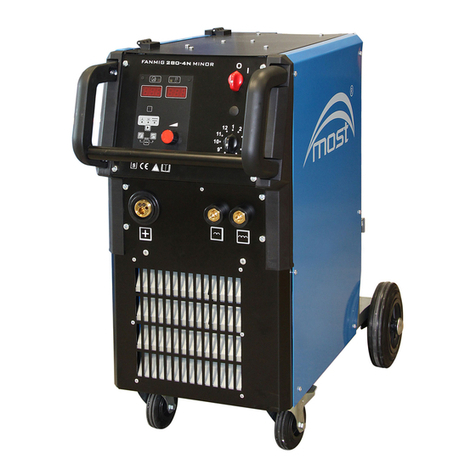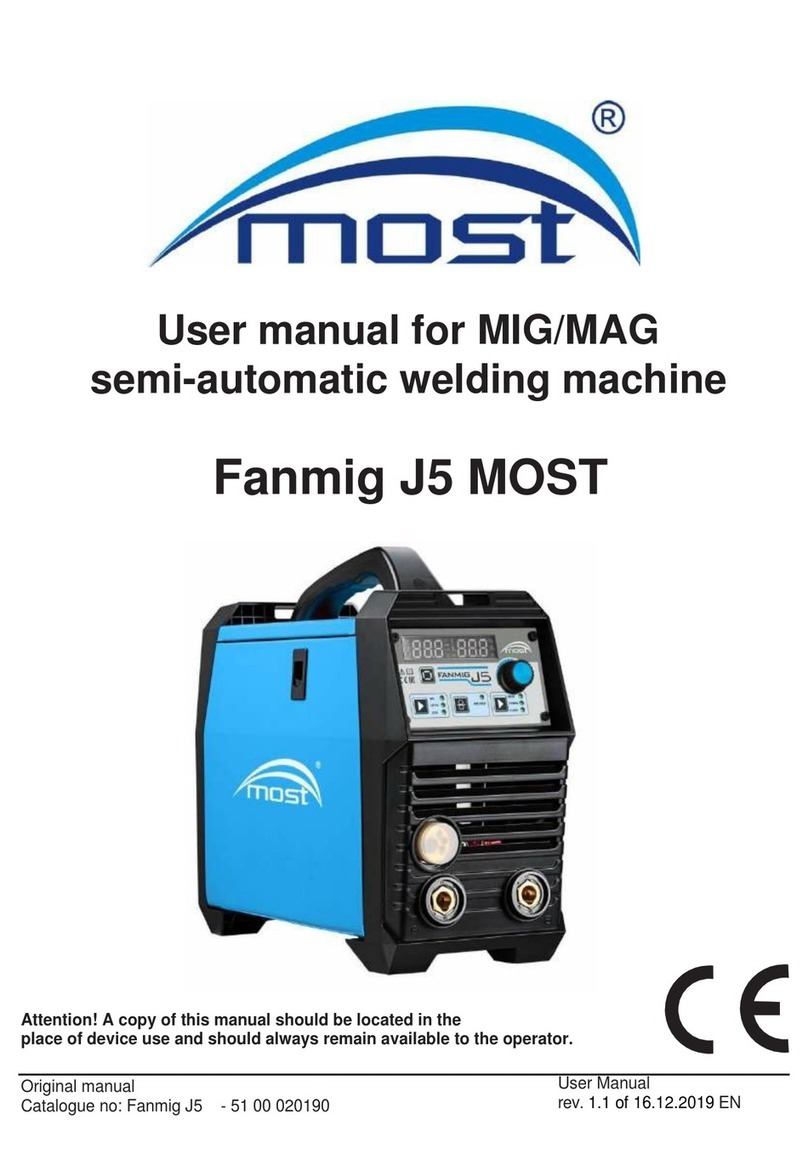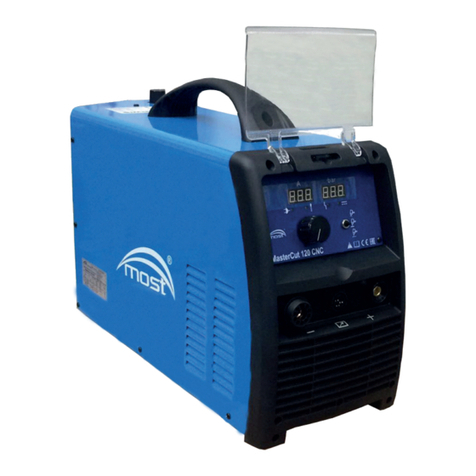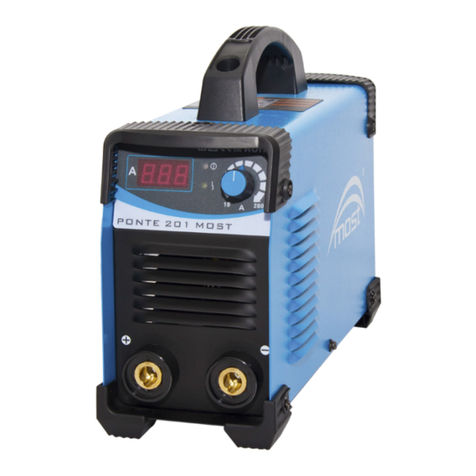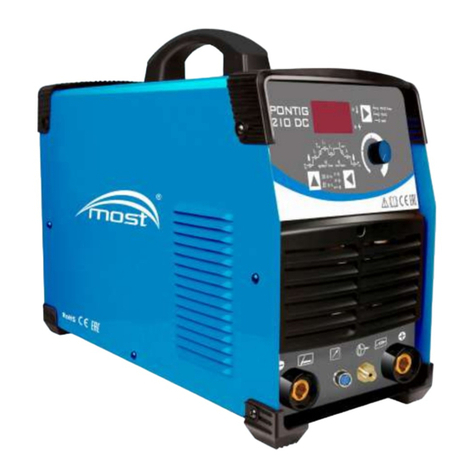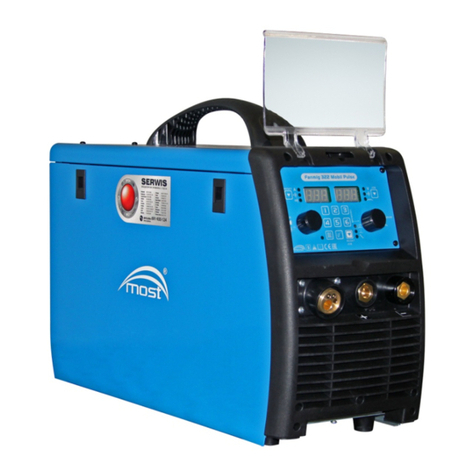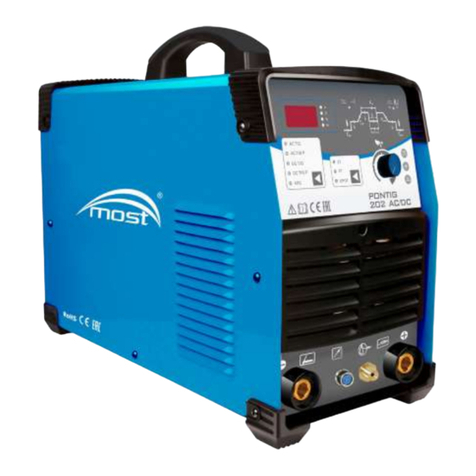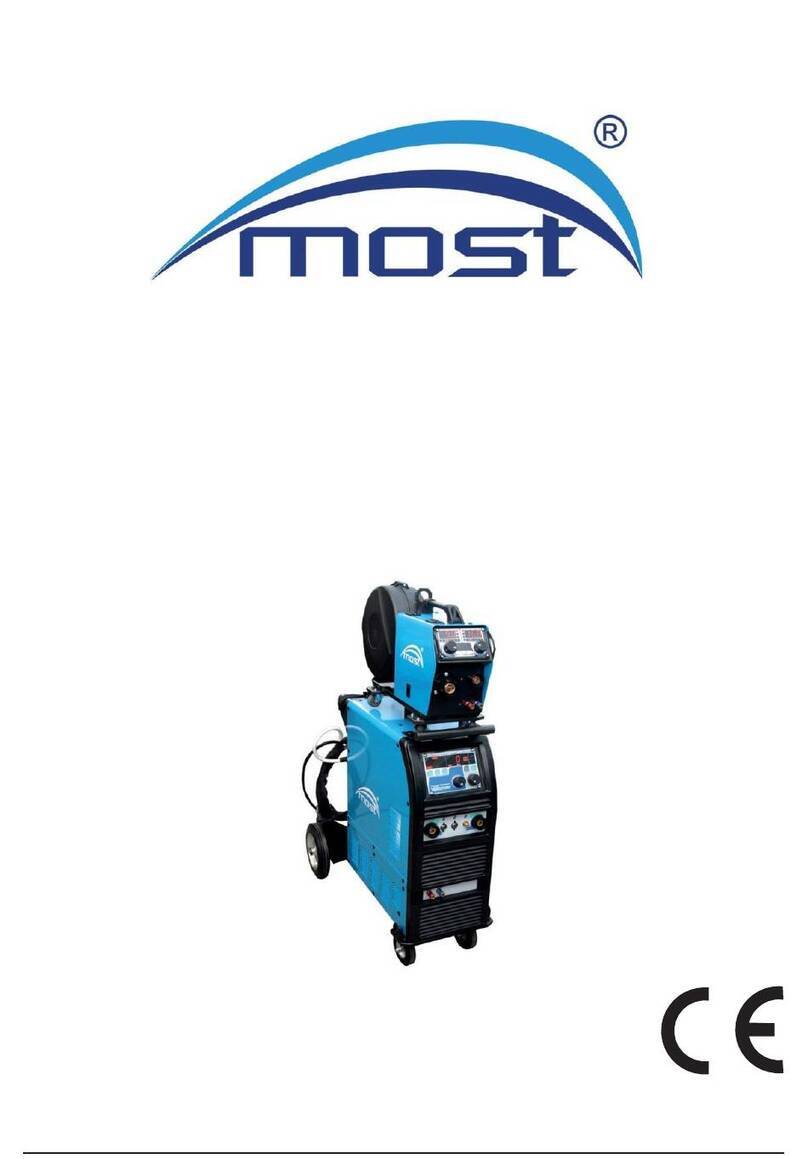
Electromagnetic interference
The device may influence other devices sensitive to electro-
magnetic interference (robots, computers, etc.)
Always ensure that the devices within the welding work station are resistant to
interfe
rence.
For the purpose of limiting interference, it is recommended to use as short welding
cables as possible and arranged in parallel.
Always work in a distance at least 100 m from other sensitive devices.
Always make sure that the installation is grounded.
If there still are interference with other devices,
properly shield the cables or use appropriate filters.
INTRODUCTION
Commissioning and normal operation are possible only after reading the carefully reading following
manual. The MIG/MAG, TIG and MMA welding requires meeting the conditions corresponding to
electric arc welding and fire regulations.
Device operator should be equipped with appropriate personal
health and safety equipment. It is
necessary to use a set of personal protective equipment in accordance with the provisions of Directive
of the Council Directive No. 2016/425. Personal protective equipment includes: welding mask, welding
gloves, protective apron, leather shoes, non-flammable welding clothing.
Despite the high technical standard of the device, the personnel should represent considerable
discipline in approach to health and safety requirements to protect against harmful and health
hazardous factors developed from welding technology.
OPERATING CONDITIONS
In order to ensure adequate service life and trouble-free operation it is recommended to:
- do not place or use this device on an inclined surface (of more than 15º),
- do not use the device for pipe defrosting,
- the device needs to be located in a place with free clean air circulation (to and from the fan without
obstacles). When connected to electrical network the device must not be covered (with, for example,
paper or cloth)
- minimize dirt and dust that can get into the device,
- device has an IP23S protection rating fo housing and may be exposed to direct atmospheric fallout
and is capable of operating outdoors.
- do not use the device for welding tanks previously used for flammable substances storing.
GASES AND FUMES
Using MIG / MAG, TIG and MMA techniques produces harmful gases and fumes containing ozone
and hydrogen as well as oxides or metal particles. Therefore, the welding work station should be
fitted with very good ventilation (dust and smoke extraction or airy location). Metal surfaces
intended for welding should be free from chemical contamination, especially degreasers (solvents)
that decompose during welding process and produce toxic gases. Welding of galvanized, cadmium-
coated or chromium-plated parts is permitted only when a suction and filtering device is fitted, and
with introduction of fresh air to the welding work station.
Operation Manual
Version 1.1 of 25-02-2019EN
Original manual
-3
